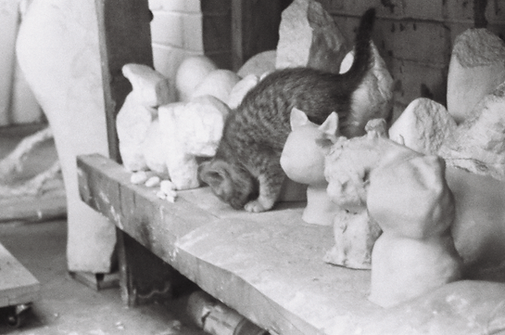HEAVEN
Nicole Page-Smith is an Australian artist living in New Zealand. Page-Smith’s philosophical inquiry into the collective unconscious took her to reading the collective works of Carl Gustav Jung. Jung’s philosophical inquiry ranged from both the physical practice of studying patients through dream analysis and psychoanalytic research. Page-Smith endeavored to participate to a contemporary understanding of philosophy with her own research project, art practice and collective art writing. Research took Jung on a collective process of discovering the brain’s activity. Page-Smith does conclude we understand through the graced history of art, what motivates the human being. In Nicole Page-Smith’s personal research and art practice making, Page-Smith, discovered from the early antiquities through to the present day, every race nominated in history explores the same notions of the spirit of “god”. Art is a spiritual concern to endeavor. The collective unconscious and subconscious collect information as artists study, walk along the street, read a book or dream. The gracing of the spirit takes the graced wings of artists higher to a plateau where, they find Heaven.
John 3:13 “And no one has ascended into heaven except him who has descended from heaven” (DV)
Therefore, “What takes you to Heaven?” is the name of the research project, Nicole Page-Smith, wishes to contribute. The sway and emotion of music takes your soul, soaring on a journey, skyward to the heavenly angels to grace your ears. Art and nature are by no means second place and the gods inform your spirit of what your heart holds in Heaven. Literature and philosophy, encourage the intellectual contributing dialogue of the day with the artists, writers and theorists and so forth, who predominate. Nicole Page-Smith has already attended residencies in London, Frankfurt and Vienna to visit participating exhibitions of catalogued note and explore thoroughly collections of major museums. Current philosophy would take Nicole Page-Smith through collections of reference and libraries, for contribution.
Christ is the inner man who is reached by the path to self-knowledge, “the kingdom of heaven within you”. C.G. Jung

Shop
The Divine, on Earth —
Review by
Don Abbott,
Art New Zealand magazine
Nicole Page-Smith’s Heaven is a dream, in two parts. The first is an essay that reads more like a mantra or prayer, an essay that focuses on several themes, which are explored and expressed repeatedly, in a manner that is poetic, hypnotic and compulsive. Ideas surrounding creation, harvest, the cosmos, gardens, plants, the seasons, deer, hay, the forest, colour and the Divine are written out in a chant-like way that both soothes and seduces the reader.
The repetition of ideas and words equates the writing with forms and concepts of music, and Page-Smith creates a linguistic harmony with her words. The text is non-narrative and non-linear, although it follows its own path-in the beginning it deals with earthly concepts, and towards its conclusion it focuses on ideas of ascension. The effect of her essay is at one point described within it:
Through, an abyss of forest floor, where you notice little of time and age, and formation, one almost forgets oneself. There is an abandonment of time and failing to realize, you are unaware, if you are standing on a forest floor or the rock of a long past forest floor, creation. Where did God take me that day? (p.29).
Throughout the text is scattered a large number of redundant and/or illogical commas (for example, ‘when, God sends you to Heaven, you are in love with his garden and the golden deer, trapse, through.’ p. 33) These achieve the aim of interrupting the process of reading, making the text, in the head of the reader, sermon-like, staccato, weighted and oratorical. Its self-awareness is established by this remarkable use of punctuation.
The text is arranged on the page in blocks that form pillars, and they start to resemble the columns that support porticos in churches and Greek revival buildings. Page-Smith is presenting a text that should be looked at, or maybe even lived in, as much as it should be read.
The second half of Heaven is a series of black-and-white photographs of a small cat, Celeste, exploring an artist’s studio. Some of the images are blurry, as if the photographer has struggled to follow closely the feline antics. Some are of the cat; in others it is camouflaged or hidden, or disappearing out of frame as it scampers to another point of interest.
The photographs are grainy and beguiling; they explore varying textures: the matte of a photograph, cat fur, studio-floor concrete and the details of the sculptor’s studio-wooden pallets, metal frames, clay and paper mache. Having consumed the essay, the reader is changed: calm, serene, untroubled, an effect that allows, the photographs to achieve a beatific relevance. Themes of innocence, play, curiosity, the inspiration of an animal kingdom and the Divine are present in the local, both in the artist’s, as seen in this suite of photographs, and, by extension, in the reader’s own environment.
With Heaven Nicole Page-Smith has produced a remarkable book, with high production values that serve her intentions well. This is an art project that reaches for the eternal and certainly affects its readers for good.
